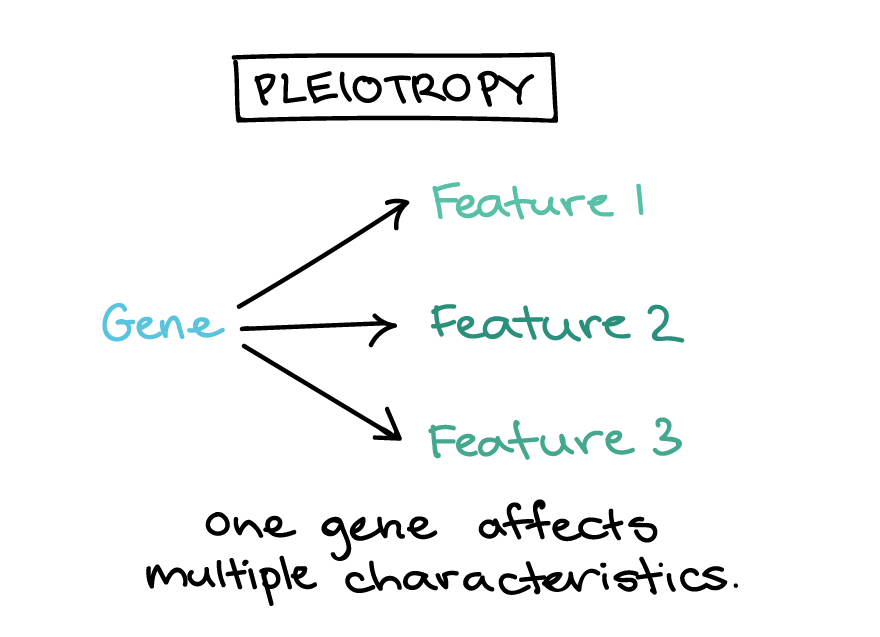Learning Outcomes
- Explain pleiotropy and its impact on traits in a population
Pleiotropy
When we discussed Mendel’s experiments with purple-flowered and white-flowered plants, we didn’t mention any other phenotypes associated with the two flower colors. However, Mendel noticed that the flower colors were always correlated with two other features: the color of the seed coat (covering of the seed) and the color of the axils (junctions where the leaves met the main stem)[1].

Based on similar diagram by Ingrid Lobo
Genes like this, which affect multiple, seemingly unrelated aspects of an organism’s phenotype, are said to be pleiotropic (pleio– = many, –tropic = effects)[2]. The seemingly unrelated phenotypes can all be traced back to a defect in a single gene with several jobs.
Importantly, alleles of pleiotropic genes are transmitted in the same way as alleles of genes that affect single traits. Although the phenotype has multiple elements, these elements are specified as a package, and the dominant and recessive versions of the package would appear in the progeny of a monohybrid cross in a ratio of 3:1.
Pleiotropy in Human Genetic Disorders
Genes affected in human genetic disorders are often pleiotropic. For example, people with the hereditary disorder Marfan syndrome may have a constellation of seemingly unrelated symptoms[3]:
- Unusually tall height
- Thin fingers and toes
- Dislocation of the lens of the eye
- Heart problems (in which the aorta, the large blood vessel carrying blood away from the heart, bulges or ruptures).
These symptoms don’t appear directly related to one another, but as it turns out, they can all be traced back to the mutation of a single gene.
Try It
Candela Citations
- Pleiotropy, lethal alleles, and sex linkage. Provided by: Khan Academy. Located at: https://www.khanacademy.org/science/biology/classical-genetics/variations-on-mendelian-genetics/a/pleiotropy-lethal-alleles-and-sex-linkage. License: CC BY-NC-SA: Attribution-NonCommercial-ShareAlike
- Lobo, I. (2008) ↵
- Ibid. ↵
- Marfan syndrome. (2012). In Genetics home reference. Retrieved from http://ghr.nlm.nih.gov/condition/marfan-syndrome. ↵
